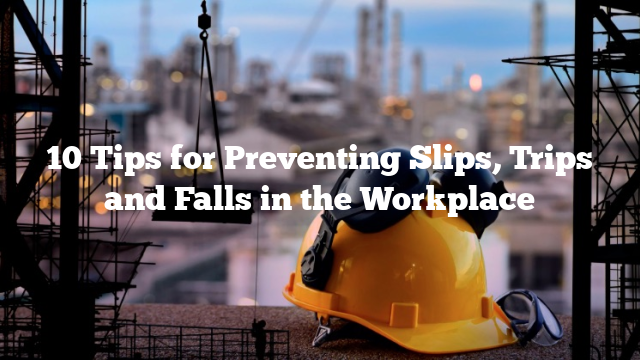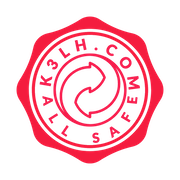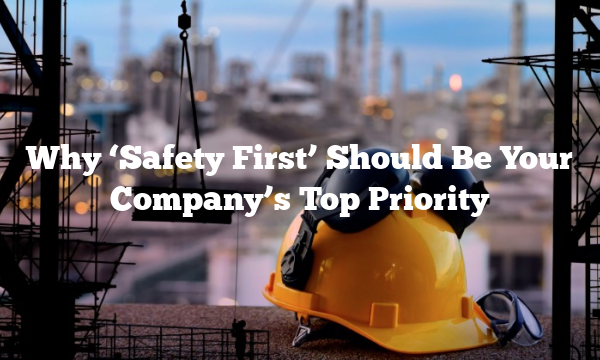Workplace Slips Trips and Falls Prevention: Essential Tips and Facts
Accidents in the workplace can happen anytime, anywhere. One of the most common types of these accidents is slips, trips, and falls. These may seem like minor mishaps but they can lead to serious injuries or even death. That’s why it’s important for employers and employees to prioritize workplace slips, trips, and falls prevention.
In this blog post, we’ll discuss the what, why, and how of workplace slips, trips, and falls prevention. We’ll also provide essential tips and facts to help you create a safer work environment.
What is Workplace Slips Trips and Falls Prevention?
Workplace slips, trips, and falls prevention is a set of measures that aim to reduce the risk of accidents caused by slippery or uneven surfaces, poor lighting, cluttered walkways, and other hazards in the workplace. These measures may include regular maintenance and cleaning, proper signage, and employee training.
Why is Workplace Slips Trips and Falls Prevention Important?
According to the Occupational Safety and Health Administration (OSHA), slips, trips, and falls are one of the leading causes of workplace injuries and fatalities. In fact, in 2019, slips, trips, and falls accounted for 880 workplace deaths in the United States.
Aside from the human cost, workplace accidents can also lead to financial losses for both employers and employees. Workplace injuries can result in medical expenses, lost wages, and even lawsuits.
Facts About Workplace Slips Trips and Falls
– Slip and fall accidents are the leading cause of workers’ compensation claims.
– Workplace accidents cost U.S. businesses around $170 billion every year.
– Most slip and fall accidents occur on the same level, not from a height.
– Slip and fall accidents are more common in certain industries, such as healthcare, retail, and hospitality.
Listicle: 5 Essential Tips for Workplace Slips Trips and Falls Prevention
1. Keep floors clean and dry. Regularly sweep, mop, and dry floors to prevent slips and trips.
2. Repair uneven surfaces. Fix any cracks or holes in floors, sidewalks, and parking lots to prevent tripping hazards.
3. Use proper signage. Mark wet floors, hazardous areas, and other potential dangers with proper signage.
4. Provide proper lighting. Make sure that all areas in the workplace are properly lit to prevent tripping hazards.
5. Train employees. Educate your employees on workplace slips, trips, and falls prevention and encourage them to report any hazards they encounter.
Tutorial of Workplace Slips Trips and Falls Prevention
Here are some steps you can take to prevent workplace slips, trips, and falls:
Step 1: Identify potential hazards in the workplace. Walk around your workplace and look for hazards such as uneven surfaces, poor lighting, and cluttered walkways.
Step 2: Prioritize the hazards. Determine which hazards pose the biggest risk and address them first.
Step 3: Develop a prevention plan. Create a plan that outlines how you will address each hazard and what measures you will take to prevent slips, trips, and falls.
Step 4: Implement the plan. Carry out the measures outlined in your prevention plan.
Step 5: Monitor and evaluate. Regularly check your workplace for hazards and evaluate the effectiveness of your prevention plan.
Tips of Workplace Slips Trips and Falls Prevention
– Encourage employees to wear slip-resistant shoes.
– Use mats and rugs to absorb moisture and prevent slips.
– Keep walkways and stairways clear of clutter.
– Install handrails on stairways and ramps.
– Conduct regular safety inspections and audits.
Question and Answer of Workplace Slips Trips and Falls Prevention
Q: Who is responsible for workplace slips, trips, and falls prevention?
A: Both employers and employees are responsible for workplace slips, trips, and falls prevention. Employers should provide a safe work environment and employees should follow safety guidelines and report hazards.
Q: What are some common causes of workplace slips, trips, and falls?
A: Some common causes of workplace slips, trips, and falls are wet floors, uneven surfaces, poor lighting, cluttered walkways, and lack of proper footwear.
Q: How can I encourage my employees to prioritize workplace slips, trips, and falls prevention?
A: Provide regular training and reminders about workplace safety. Encourage employees to report hazards and reward them for doing so.
Q: What should I do if I encounter a slip, trip, or fall hazard in the workplace?
A: Report the hazard to your employer or supervisor immediately. If possible, remove or address the hazard yourself if it can be done safely.
Conclusion of Workplace Slips Trips and Falls Prevention
Preventing workplace slips, trips, and falls should be a top priority for employers and employees alike. By identifying hazards, developing prevention plans, and following safety guidelines, we can create a safer work environment for everyone. Remember, a little prevention can go a long way in avoiding workplace accidents and injuries.
Recommendations:
- Health And Safety Poster Uk Health and safety posters. Free health and safety posters. Health And Safety Law What You Need To Know Hse Law Poster A2 The health and safety executive has produced a…
- Picture Of Safety Equipment If you're looking for picture of safety equipment pictures information connected with to the picture of safety equipment topic, you have visit the right blog. Our website frequently gives you…
- Unsafe Work Photos If you're looking for unsafe work photos images information related to the unsafe work photos topic, you have come to the ideal site. Our website frequently provides you with suggestions…
- 5 Essential Tips for Preventing Workplace Slips,… Introduction Slips, trips, and falls are the leading causes of workplace accidents and injuries. Whether you work in an office or a factory, the risk of slipping, tripping, and falling…
- Stepping Up Safety: Tips for Preventing Workplace… Introduction: According to the National Safety Council, slips, trips, and falls are the third leading cause of unintentional injury-related deaths in the United States. Workplace slips, trips, and falls can…
- Health And Safety Poster Pdf Makrosafe holdings pty ltd is a fully fledged health and safety service provider. Improve health and safety. Mhs Help Files 02 Explain how risks will be controlled in a way…
- Free Health And Safety Images If you're searching for free health and safety images images information linked to the free health and safety images keyword, you have pay a visit to the ideal site. Our…
- 10 Essential Industrial Safety Posters Every Workplace Needs Introduction: Safety is a top priority in any industrial environment, and the right safety posters can help remind workers of the potential hazards and the steps they can take to…
- Workplace Safety Signs And Symbols, Why so important? Proper workplace safety signs and symbols always place in a construction site, mining site, oil and gas site or hospital and your workplace.
- Health And Safety Background Images If you're looking for health and safety background images images information connected with to the health and safety background images topic, you have pay a visit to the ideal blog.…
- Health And Safety Inspection Report Template Use for office health and safety audits. Add a badge to your website or intranet so your workers can quickly find answers to their health and safety questions. Safety Report…
- Work Health And Safety Images If you're looking for work health and safety images images information linked to the work health and safety images topic, you have visit the right site. Our site frequently provides…
- 5 Tips for Preventing Workplace Slips, Trips, and Falls Workplace Slips Trips and Falls Prevention Every year, millions of people suffer from injuries caused by slips, trips, and falls in the workplace. These accidents can happen in any industry,…
- Discover Job Hazard Analysis Examples to Improve… Job Hazard Analysis Examples. Every workplace has its own set of safety standards and procedures. But it can be difficult to know which safety protocols are most effective, and which…
- Fire Safety Pic If you're looking for fire safety pic images information connected with to the fire safety pic interest, you have visit the ideal site. Our site always provides you with suggestions…
- Chemical Safety Images If you're searching for chemical safety images images information related to the chemical safety images keyword, you have come to the right site. Our website always gives you hints for…
- Workplace Health And Safety Signs Employers must provide safety signs if there is a possibilty of significant risk in the workplace. What safety signs does your workplace need. Safety Signage And Your Workplace Whs Consulting…
- Pictures Of Hazards In The Workplace If you're looking for pictures of hazards in the workplace images information connected with to the pictures of hazards in the workplace topic, you have pay a visit to the…
- Safety Week Image If you're looking for safety week image images information linked to the safety week image keyword, you have visit the right site. Our site always provides you with suggestions for…
- Safety Meeting Images If you're searching for safety meeting images images information connected with to the safety meeting images keyword, you have come to the ideal blog. Our site frequently provides you with…
- Images Of Work Boots If you're looking for images of work boots pictures information related to the images of work boots interest, you have visit the right site. Our site always provides you with…
- Health And Safety Poster Ontario Occupational health and safety act ohsa employers are required to post a copy of the occupational health and safety act in their workplaces. Ontario health safety at work. Occupational Health…
- Material Safety Data Sheet Image If you're searching for material safety data sheet image images information related to the material safety data sheet image topic, you have visit the right site. Our site always provides…
- Workplace Health And Safety Representative Poster Health and safety representatives information for elected health and safety representatives hsrs. But reminders posted in your workplace andor community can help. Effective Health And Safety Committees Infographic One of…
- Free Safety Pictures If you're looking for free safety pictures pictures information connected with to the free safety pictures keyword, you have visit the right site. Our site frequently gives you hints for…
- The Importance of Embracing Discomfort for Ultimate Safety No Safety, Know Pain; Know Safety, No Pain Essay: Why Safety Should Be a Priority in Our Lives Safety is one of the most essential aspects of life, yet it…
- Health And Safety Inspection Form Safety inspections are essential to ensuring and effective safety program. More about download the free osh answers app. Workplace Health And Safety Inspection Forms Survey Templates And Alternatively they may…
- Safety Quotes Images A safety leader will go above and beyond to make safety a priorityfor themselves and for those around them. Safety images photos unsafe pictures and funny fails. Safety Doesn T…
- Safety Day Image If you're searching for safety day image images information connected with to the safety day image keyword, you have visit the right blog. Our site frequently gives you suggestions for…
- Public Safety Pictures If you're looking for public safety pictures images information linked to the public safety pictures interest, you have pay a visit to the ideal blog. Our site frequently provides you…
Advertisement
Scroll to Continue With Content




